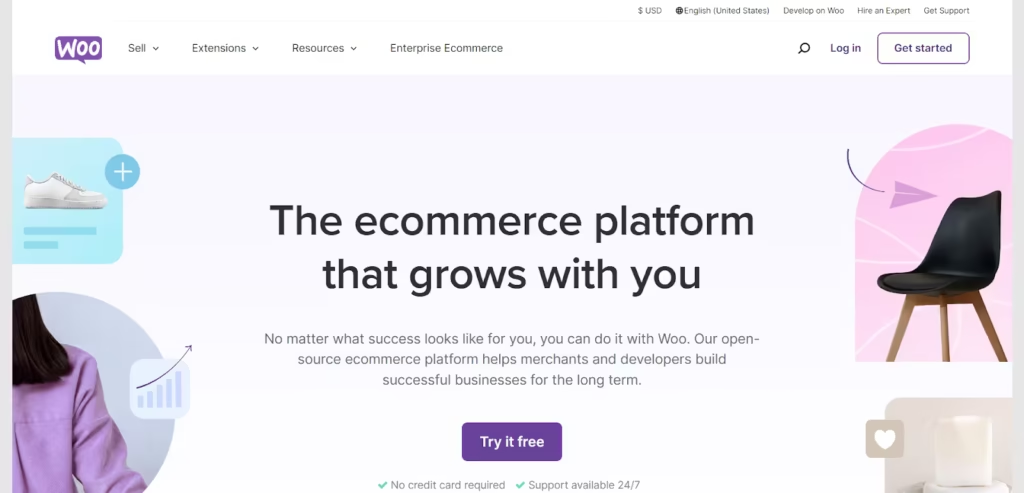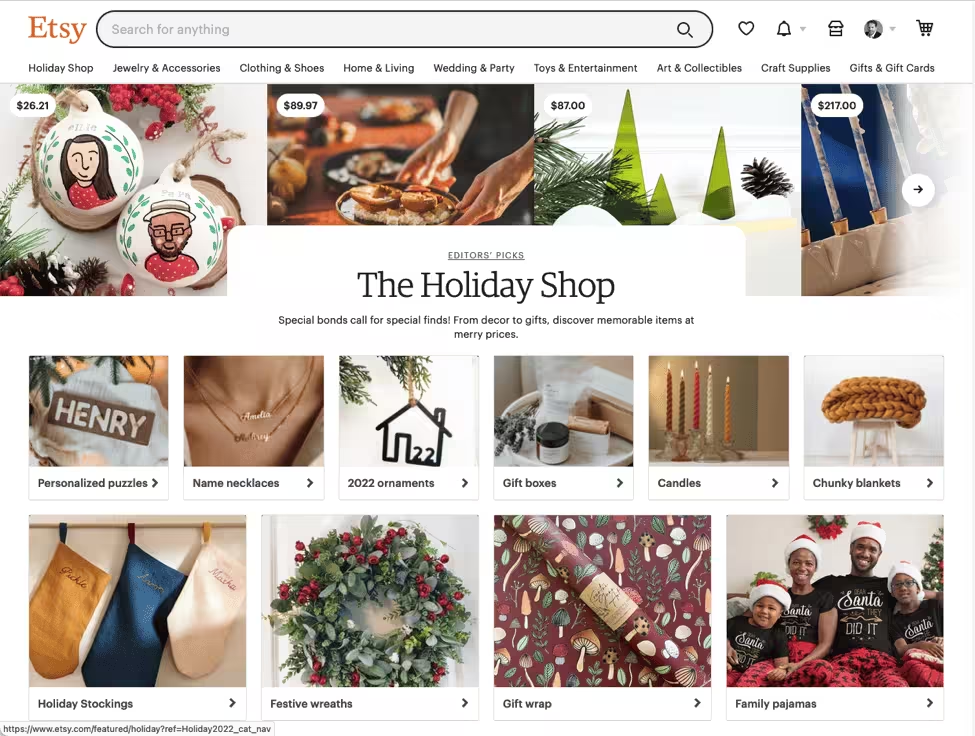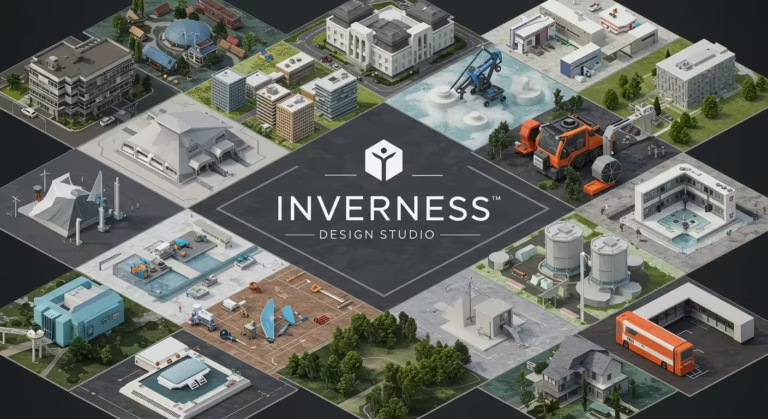Making the switch from an Etsy store to your own eCommerce website might be a crucial turning point in your business’s development. An standalone website offers significant advantages in terms of ownership, branding, and expansion possibilities, even though Etsy provides an easy-to-use platform.
The main benefits and difficulties of switching from Etsy to a custom-built eCommerce website will be discussed in this post.
5 Compelling Reasons to Move from Etsy to Your Own eCommerce Website
1. Full Control Over Your Branding
The degree of control it gives you over your branding is one of the primary reasons to switch from Etsy to a specialised eCommerce website.
You are constrained by the layout and style guidelines of Etsy. However, with your own website, you may completely alter every element of the design, from product pages to the homepage layout, providing a more distinctive and customised user experience. This enables you to establish a solid, dependable brand image, which is essential for sustained company success.
Businesses may achieve previously unheard-of branding potential by switching from Etsy to a specialised eCommerce website and implementing extensive digital customisation. With total creative freedom offered by a self-hosted online shop, business owners can create a distinctive digital experience that accurately captures the personality, visual character, and market positioning of their brand.
A bespoke website gives you complete flexibility over colour palettes, font, page layouts, and interactive design components, in contrast to Etsy’s constrictive template-based approach.
Independent eCommerce branding has several strategic benefits that go well beyond aesthetics. Businesses may establish a unified brand story that skilfully combines marketing messaging, user experience, and visual design by creating a unique digital platform. Advanced brand storytelling options are provided by custom websites, which enable businesses to identify product origins, highlight their distinctive value proposition, and establish stronger bonds with target consumers.
Furthermore, independent platforms offer strong analytics that let companies monitor user activity, improve conversion funnels, and constantly improve their digital brand strategy using insights from data.
2. No Competition on Your Site
You are always up against other Etsy sellers who are selling comparable goods, frequently in the same category. This implies that your competitors are just a click away from your potential clients. A stand-alone website solves this problem. Because site visitors are there expressly to look at your stuff, there are less distractions and a higher chance of conversion.
Businesses can overcome the crucial obstacle of direct competition awareness when they go from an Etsy marketplace to a stand-alone eCommerce website. By eliminating the continual visual cacophony and competing diversions present in multi-seller platforms, a private online store establishes a concentrated shopping experience where customers engage only with your brand’s items.

Beyond less competition, a specialised website offers a strategic advantage that radically alters the customer’s shopping experience. Businesses can build captivating product stories, deploy targeted conversion techniques, and design straightforward navigation by taking complete control of the user experience—things that are unachievable in a congested marketplace.
This strategy not only boosts sales potential but also permits greater brand engagement, allowing clients to relate to the company’s distinctive value offer on a deeper level.
3. Lower Fees and Better Profit Margins
Listing fees, transaction fees, and payment processing costs are just a few of the fees that Etsy charges, and they can mount up rapidly. For instance, costs for a £10 item on Etsy might reach £1.25. Even while creating an eCommerce website has upfront expenses, since you don’t have to pay for each transaction, it’s frequently more economical in the long run.
As you take charge of transaction fees and other expenses, your profit margins will increase.
By lowering transaction-related expenses, switching from Etsy to a specialised eCommerce platform can greatly increase profit margins. In addition to a set fee of $0.20 each listing, Etsy levies a 6.5% transaction fee on the whole selling price, including shipping expenses.
Etsy Payments also charges a $0.25 fixed fee every transaction in addition to a 3% processing cost. The profitability of vendors may be significantly impacted by these fees, particularly for lower-priced goods.
On the other hand, companies may avoid Etsy’s platform fees and have greater control over the expenses associated with processing payments by running their own eCommerce website. Even while a stand-alone website has startup costs and hosting fees, these are frequently compensated for by higher profit margins on each transaction.
Popular eCommerce systems such as Shopify, for example, provide relatively affordable processing costs, usually about 2% plus a tiny set fee each sale. Over time, this decrease in transaction costs might result in substantial savings, particularly for sellers with large volumes.
Furthermore, companies may more successfully maximise their profit margins when they have direct control over pricing policies and promotional offers free from platform limitations.
4. Customised Customer Experience
You may provide your clients with a customised experience by having your own website. There are countless ways to improve your customer journey, from developing tailored product suggestions to incorporating loyalty programs. Additionally, you may monitor consumer behaviour to provide tailored promotions that increase customer happiness and sales conversion rates.
Making the switch from Etsy to a specialised eCommerce website opens up revolutionary possibilities for producing incredibly customised client experiences. Sophisticated customer journey mapping is made possible by advanced digital platforms, which also enable organisations to deploy data-driven marketing tactics, dynamic content personalisation, and intelligent recommendation engines that instantly adjust to the tastes and behaviours of individual users.
Businesses can create engaging, dynamic shopping experiences that greatly increase engagement and conversion potential by utilising advanced analytics and consumer data tracking.
Beyond simple personalisation, a bespoke website’s strategic benefits allow companies to deploy extensive customer relationship management (CRM) technologies that were previously unattainable on marketplace platforms. To provide a comprehensive, personalised shopping experience, features like segmented email marketing,
AI-powered product suggestions, personalised landing pages, and linked reward programs may be easily implemented.
By showcasing a thorough awareness of each client’s unique wants and preferences, these cutting-edge skills not only increase customer pleasure but also foster enduring brand loyalty.
5. Enhanced Scalability
For small enterprises, an Etsy store is ideal, but it might not be able to handle expansion. The limits of Etsy may become evident as your business grows. An eCommerce website gives you the freedom to grow your business as necessary. To make your business run more smoothly, you may interface with third-party applications, create additional product categories, and provide sophisticated payment methods.
A separate eCommerce website provides unmatched scalability and operational flexibility when companies surpass the limitations of Etsy’s marketplace. Growing businesses find that Etsy’s platform restrictions make it more difficult to expand their product ranges, payment options, and technical integrations—all of which are essential for long-term company success.
A bespoke eCommerce website gives business owners the flexibility to quickly scale their digital infrastructure without being constrained by platform limitations.
Businesses may enable exponential expansion by using cutting-edge technical solutions to extend product categories, integrate intricate payment gateways, deploy sophisticated inventory management systems, and modify backend processes. Businesses may use sophisticated analytics, react swiftly to market needs, and develop a more resilient, future-proof company model that can change in tandem with their strategic goals thanks to this degree of technical agility.
3 Powerful Reasons to Choose an Etsy Store Over an eCommerce Website
1. Initial Setup and Development Time
Compared to Etsy’s instant selling possibilities, building a fully complete eCommerce website takes a substantial amount of work. Depending on the project’s complexity and size, a bespoke eCommerce site’s development period usually lasts between four and sixteen weeks.
The development process might take four to six weeks for a simple eCommerce website with standard functionality and no customisation. This timeline covers crucial actions including choosing a platform, implementing a basic design, setting up a product catalogue, and integrating basic eCommerce features like payment gateways and shopping carts.
The development period, however, may increase to 12 weeks or longer for more intricate eCommerce projects with sophisticated features, unique designs, and huge product catalogues.
This extended timetable takes into consideration complex frontend design, advanced backend development, extensive testing and quality assurance procedures, and complete product management systems.

The size of the product catalogue, the degree of customisation needed, the eCommerce platform of choice, the necessity for third-party service integration, and the complexity of features like advanced search and personalised user experiences are some of the major elements affecting the development timeframe. Compared to Etsy’s instant selling platform, this initial setup time may appear considerable, but it enables the development of a customised online shop that gives expanding companies more control over branding, user experience, and long-term scalability.
2. Marketing Your Website
Your own website needs a more active strategy to get visitors than Etsy, where your items may be found by the platform’s existing audience. This entails spending money on digital marketing techniques including paid advertising, social media promotion, and search engine optimisation (SEO). The long-term advantages of controlling your traffic outweigh the time and work required to grow your audience.
Businesses must take a proactive approach to digital marketing when moving from Etsy to a stand-alone eCommerce website in order to draw in and keep clients. Driving visitors to an independent website necessitates a smart investment in a variety of marketing methods, unlike Etsy’s built-in audience.
For eCommerce websites, search engine optimisation (SEO) is essential to boosting organic visibility. Optimising product and category pages as well as producing interesting content that focusses on pertinent keywords are all part of putting SEO techniques into practice. For instance, search rankings may be considerably raised by including target keywords into picture alt text, body language, title tags, and URLs.
Furthermore, writing educational blog entries and product descriptions improves the user experience overall by adding value for prospective buyers in addition to helping with SEO.
Another crucial element of an all-encompassing eCommerce marketing plan is social media marketing. Social media sites like Facebook, Instagram, and TikTok provide chances to interact with clients, display items, and increase website traffic. Conversion rates may be raised and the buying process streamlined by utilising features like social commerce and shoppable posts.
Additionally, retargeting prospective buyers who have expressed interest in items and reaching new audiences can be accomplished by running targeted social media advertisements.
3. Maintenance and Updates
In order to guarantee the best possible speed, security, and user experience, owning an eCommerce website entails the obligation of regular maintenance and upgrades. Maintaining a stand-alone website necessitates routine attention to technical elements like enhancing site performance, resolving bugs, and guaranteeing compatibility with the most recent browser and device upgrades, in contrast to Etsy, where platform maintenance is taken care of for you.
Furthermore, applying security patches and upgrades is crucial to safeguarding client information and upholding confidence, particularly in light of the constantly changing nature of cyberthreats.
These duties may appear overwhelming to entrepreneurs who lack technological expertise. However, a large portion of this load may be reduced by working with a trustworthy web design and development firm. Tasks like tracking website performance, improving loading times, and upgrading plugins or software to maintain site functionality can be handled by professional developers.
In order to maintain the site’s aesthetic appeal and conformity to contemporary trends, they may also help with improving SEO components, updating product listings, and making design modifications. Maintaining an eCommerce website becomes a straightforward operation with the correct support system in place, guaranteeing the competitiveness and security of your online business.
Why Your Own Website is Worth the Investment
Although switching from Etsy to a stand-alone eCommerce website might seem overwhelming, there are substantial long-term benefits. For companies aiming to grow, it’s a wise investment since it allows you to manage your customer experience, establish a strong brand, and optimise for higher profit margins.
Making the move is a wise decision for a number of reasons, including the flexibility, scalability, and chance to establish a distinctive online presence.
Conclusion
To sum up, transitioning from Etsy to your own eCommerce website unlocks a world of opportunities, including complete control over your branding, increased profit margins, and unlimited growth potential. While the initial setup and marketing effort may require investment, the long-term rewards make it an essential step for businesses looking to scale and succeed in the online marketplace.
At Inverness Design Studio, we’re here to provide the resources, expertise, and support you need to make this strategic move. By building a custom eCommerce website tailored to your unique business goals, you can establish a powerful, independent online presence that drives growth, strengthens customer relationships, and sets your business up for lasting success. To find out more, visit out eCommerce web design page.



